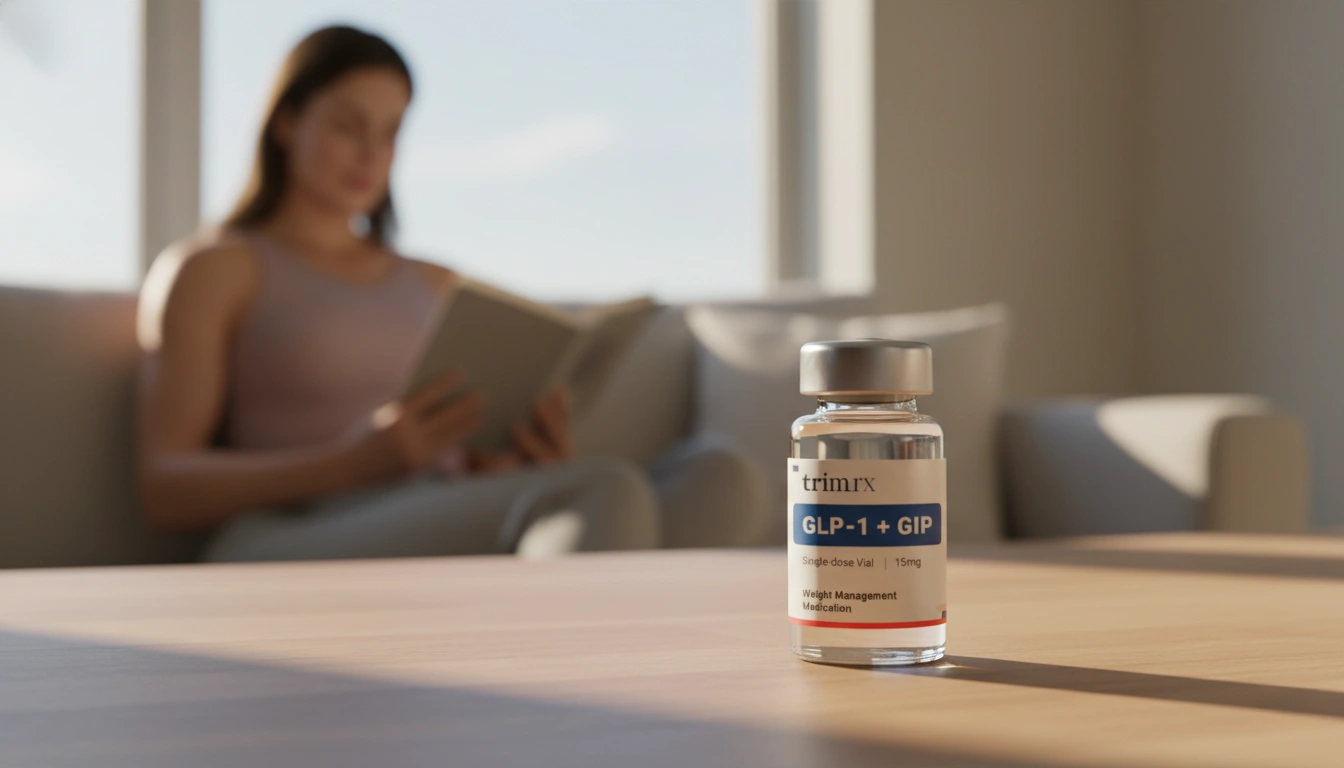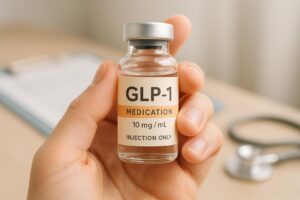What Foods Help Produce GLP-1: A Guide to Boosting Your Health Naturally

Introduction
Did you know that the foods you choose to eat can significantly influence how your body manages hunger, blood sugar levels, and overall metabolic health? One critical player in this complex system is a hormone called glucagon-like peptide-1 (GLP-1). This hormone is produced in the gut and plays a pivotal role in regulating appetite and insulin secretion. As we explore the connection between diet and GLP-1 production, we’ll uncover how certain foods can help increase its levels, providing you with valuable insights to optimize your health.
GLP-1 is released in response to food intake, particularly when we consume nutrients such as proteins, healthy fats, and dietary fibers. The significance of GLP-1 has gained considerable attention, especially in the context of weight management and diabetes treatment. With the rise of medications that mimic GLP-1, understanding the natural ways to boost this hormone is more relevant than ever.
In this blog post, we will delve into the foods that help produce GLP-1, how they work, and how to incorporate them into your diet. We aim to empower you with knowledge that can help improve your health and manage your weight effectively. By the end of this article, you will have a comprehensive understanding of how to harness the power of food to enhance your body’s GLP-1 production.
We will structure our discussion around the following key points:
- Understanding GLP-1 and its functions
- The role of diet in GLP-1 secretion
- Foods that help increase GLP-1 levels
- Practical tips for incorporating these foods into your diet
- Conclusion and reflections
Let’s embark on this journey together to discover how we can support our health through food choices.
Understanding GLP-1 and Its Functions
GLP-1 is classified as an incretin hormone, which means it is released by the gut in response to food intake. It has several important functions in the body, including:
- Stimulating Insulin Secretion: After we eat, GLP-1 helps stimulate the pancreas to release insulin, which is essential for lowering blood sugar levels.
- Inhibiting Glucagon Release: GLP-1 reduces the secretion of glucagon, a hormone that raises blood sugar levels, thus maintaining a balanced glucose level.
- Slowing Gastric Emptying: By slowing the rate at which food leaves the stomach, GLP-1 promotes a feeling of fullness and helps regulate appetite.
- Promoting Satiety: GLP-1 signals the brain that we are full, which can help prevent overeating.
The production of GLP-1 occurs mainly in the L-cells of the intestine, and its secretion is influenced by the types of foods we consume. This is where our dietary choices come into play, as certain foods can enhance GLP-1 production and improve metabolic health.
The Role of Diet in GLP-1 Secretion
Research indicates that dietary components play a crucial role in GLP-1 secretion. Specific nutrients, particularly those high in fiber and protein, have been shown to stimulate GLP-1 release effectively. Here’s how different food components contribute to GLP-1 regulation:
- Fiber: Dietary fibers, especially soluble fibers, are fermented by gut bacteria into short-chain fatty acids (SCFAs), which are known to increase GLP-1 levels. High-fiber foods help slow digestion, leading to a gradual release of glucose into the bloodstream, which triggers GLP-1 secretion.
- Proteins: Certain amino acids derived from dietary proteins can stimulate GLP-1 secretion. Meals rich in protein have been shown to enhance insulin response and satiety.
- Healthy Fats: Unsaturated fats, particularly those found in foods like olive oil and avocados, also support GLP-1 secretion. These fats can improve insulin sensitivity and help regulate blood sugar levels.
By understanding these dietary influences, we can make informed choices that support our body’s natural GLP-1 production.
Foods That Help Increase GLP-1 Levels
Now that we have a clearer understanding of GLP-1 and how diet affects its secretion, let’s take a look at specific foods that can help boost GLP-1 levels:
1. Eggs
Eggs are a rich source of high-quality protein and healthy fats. Research shows that consuming eggs can lead to increased GLP-1 secretion. A study found that individuals who had a breakfast of eggs experienced lower post-meal blood glucose levels and reduced hunger compared to those who consumed high-carbohydrate meals like bagels.
2. Nuts
Nuts such as almonds, walnuts, and pistachios are packed with protein, fiber, and healthy fats that can promote GLP-1 release. The fiber content in nuts helps slow digestion, leading to a gradual increase in blood glucose levels, which in turn stimulates GLP-1 secretion.
3. High-Fiber Grains
Whole grains like oats, barley, and quinoa are excellent sources of soluble fiber. These grains not only support digestive health but also promote GLP-1 secretion through the fermentation process in the gut. The SCFAs produced from these fibers can stimulate GLP-1 release.
4. Avocados
Avocados are rich in monounsaturated fats and fiber, both of which contribute to increased GLP-1 levels. Studies have shown that including avocado in meals can enhance satiety and regulate blood sugar levels effectively.
5. Olive Oil
Olive oil, particularly extra virgin olive oil, is known for its heart-healthy benefits. It contains unsaturated fats that have been shown to effectively stimulate GLP-1 secretion compared to saturated fats. Including olive oil in your diet can support both GLP-1 levels and overall cardiovascular health.
6. Vegetables
Non-starchy vegetables like Brussels sprouts, broccoli, and carrots are high in fiber and essential vitamins. These foods can help regulate blood sugar levels and have been linked to increased GLP-1 secretion as well.
7. Legumes
Beans, lentils, and peas are fantastic sources of both protein and fiber. The soluble fiber in legumes can lead to higher GLP-1 production, making them an excellent choice for enhancing satiety and blood sugar control.
8. Fruits
Certain fruits, particularly those high in fiber like apples, pears, and citrus fruits, can stimulate GLP-1 secretion. These fruits are not only nutritious but also delicious ways to promote overall health.
By incorporating a variety of these foods into our meals, we can naturally enhance our GLP-1 levels and improve our metabolic health.
Practical Tips for Incorporating These Foods into Your Diet
Now that we know which foods can help boost GLP-1 levels, let’s discuss some practical tips on how to incorporate them into our daily meals:
-
Start Your Day with Protein: Incorporate eggs or Greek yogurt into your breakfast to kickstart your day with protein and healthy fats. Adding fruits or nuts can enhance the meal’s fiber content and satiety.
-
Snack Wisely: Choose nuts or high-fiber fruits as snacks instead of processed options. This can help keep your hunger in check and support GLP-1 production.
-
Make Salads Filling: Add avocado and legumes to your salads for a nutrient-dense, fiber-rich meal. Use olive oil as a dressing to enhance flavor and health benefits.
-
Opt for Whole Grains: Replace refined grains with whole grains like quinoa, barley, or brown rice in your meals. These options are not only nutritious but also help regulate blood sugar levels.
-
Cook with Healthy Fats: Use olive oil when cooking or preparing meals instead of butter or other saturated fats. This simple switch can positively impact your GLP-1 levels and overall health.
-
Experiment with Vegetables: Incorporate a variety of non-starchy vegetables into your meals. Roasting, steaming, or sautéing can enhance flavor and make these foods more enjoyable.
-
Mindful Eating: Take time to enjoy your meals and eat slowly. Mindful eating can help you recognize fullness cues and prevent overeating, allowing GLP-1 to work effectively.
By implementing these practical tips, we can create a balanced diet that supports our health and boosts GLP-1 levels naturally.
Conclusion
In summary, GLP-1 is a vital hormone that plays a crucial role in appetite regulation and blood sugar control. By understanding how our dietary choices impact GLP-1 secretion, we can make informed decisions that promote our health. Foods such as eggs, nuts, high-fiber grains, avocados, olive oil, vegetables, legumes, and fruits can significantly enhance GLP-1 production.
As we venture into our health journeys, let’s remember that the power to influence our well-being lies in our hands—through the food we choose to consume. By embracing a diet rich in these GLP-1-boosting foods, we can enhance our metabolic health, manage our weight, and ultimately thrive.
FAQ
What is GLP-1, and why is it important?
GLP-1 (glucagon-like peptide-1) is a hormone produced in the gut that helps regulate blood sugar levels, stimulates insulin secretion, and promotes a feeling of fullness.
How can I naturally boost my GLP-1 levels?
You can naturally boost GLP-1 levels by consuming foods high in protein, fiber, and healthy fats, such as eggs, nuts, legumes, whole grains, and avocados.
Are there any specific foods I should avoid to maintain healthy GLP-1 levels?
While there are no specific foods to avoid, it’s advisable to limit processed foods high in refined sugars and unhealthy fats, as they may negatively impact metabolic health.
Can exercise influence GLP-1 levels?
Yes, physical activity has been shown to increase GLP-1 levels. Incorporating regular exercise into your routine can support overall metabolic health.
Is it necessary to take GLP-1 medications if I eat a GLP-1-boosting diet?
While a diet rich in GLP-1-boosting foods can support metabolic health, some individuals may still benefit from GLP-1 medications as part of their treatment plan for diabetes or obesity. Always consult with your healthcare provider for personalized advice.
By understanding and implementing these dietary strategies, we can enhance our health and well-being while harnessing the power of our body’s natural processes. Together, let’s take steps towards a healthier future!

Transforming Lives, One Step at a Time
Keep reading
Tracking Progress With GLP-1: What To Measure
Learn which metrics to track on GLP‑1 therapy—weight, waist, blood sugar, lipids, side effects, and non‑scale wins—and how often to monitor them.
Fatigue Solutions for Ozempic and Wegovy Users
Hydration, protein-rich meals, light activity, and better sleep can reduce medication-related fatigue and help maintain energy during weight-loss treatment.
GLP-1 Medication Side Effect Checker
Worried about GLP-1 medication side effects? Use our free checker for Semaglutide, Liraglutide, and more to learn what to expect and stay informed!



